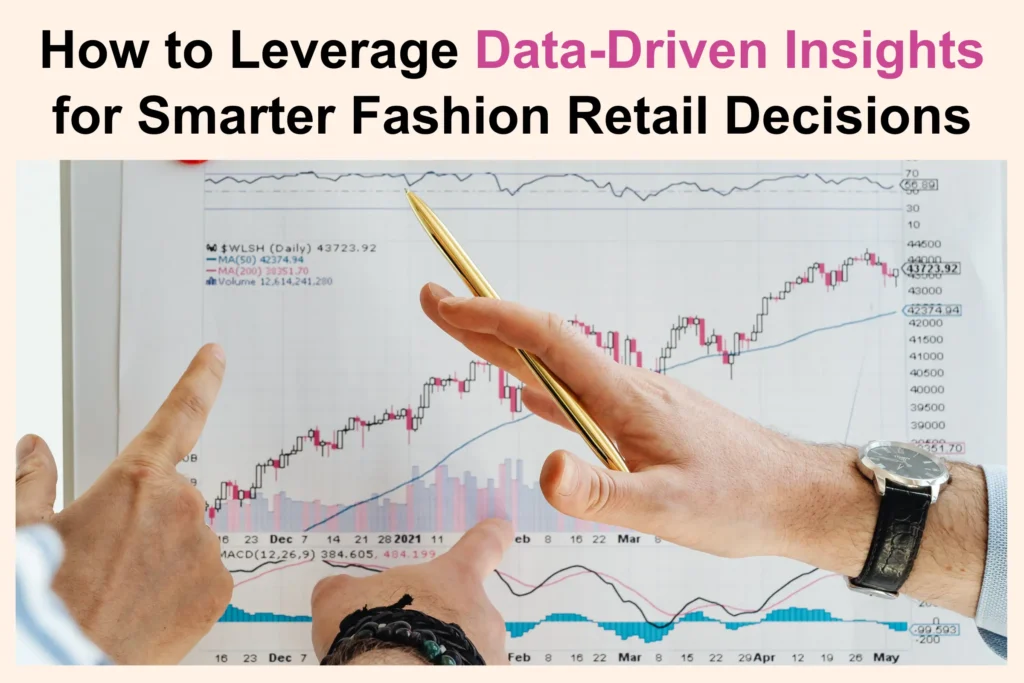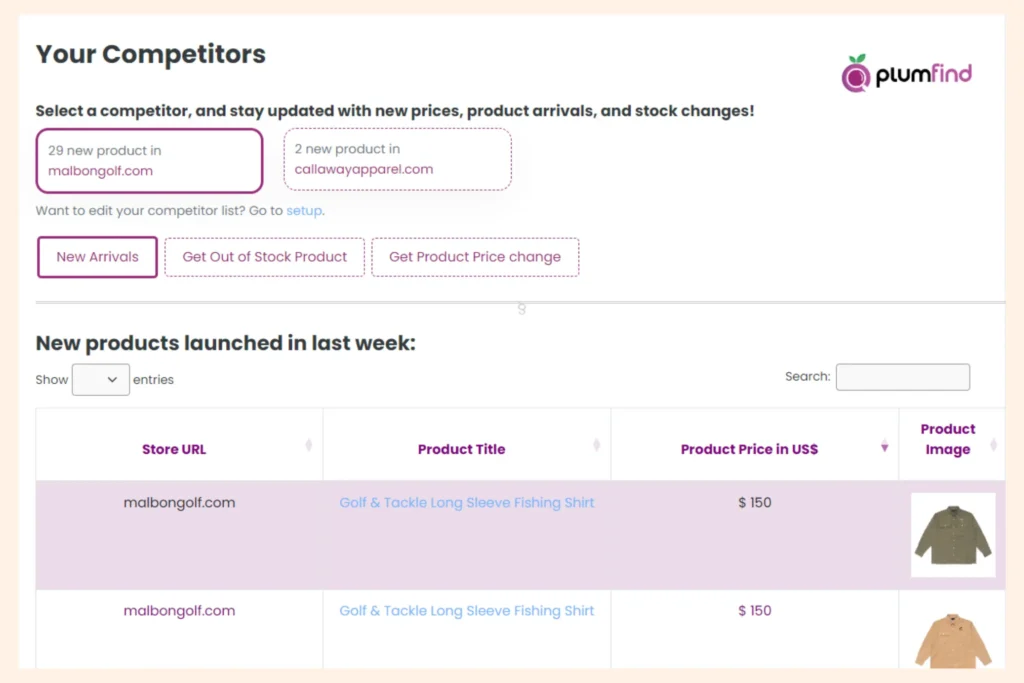Unlock the power of data! Learn how data insights can revolutionize your fashion business, optimize operations & keep you ahead of the competition. In the ever-evolving world of fashion e-commerce, intuition and guesswork just don’t cut it anymore. Harness the power of data analytics to make smarter decisions for your fashion business. Improve marketing, optimize inventory, and personalize the customer experience.
To truly thrive, you need to move beyond gut feelings and embrace the power of data-driven insights.
This strategic shift empowers you to make informed decisions, optimize your operations, and ultimately, keep your fashion business ahead of the curve.

Why Should Data Be Your New Best Friend?
Imagine knowing exactly what styles will fly off the shelves, which marketing campaigns resonate most with your audience, and how to personalize the shopping experience for each customer. Sounds like a dream, right?
Well, with data-driven insights, this fashion utopia can become a reality.
“Data is the new oil. It’s becoming more and more valuable by the day, and businesses that learn to refine it will have a big advantage.”
~ Clive Humby
Author of “Data, a Love Story”
So, what kind of data are we talking about? Here are some key areas to explore:
- Customer data: Analyze purchase history, demographics, browsing behavior, and feedback to understand your target audience and personalize their experience.
- Product data: Track performance metrics like sales, reviews, and returns to identify best-sellers, optimize inventory management, and inform future product development.
- Marketing data: Measure the effectiveness of your campaigns across different channels, identify high-performing strategies, and allocate resources accordingly.
- Website data: Analyze traffic patterns, user behavior, and conversion rates to optimize your website for seamless navigation and increased sales.
- Competitive Intelligence Data: Check your competitor’s website for changes in prices, new products added, and out-of-stock items.
From Insights to Actionable Strategies:
Now that you have a treasure trove of data, it’s time to transform it into actionable strategies.
Here are some ways to get started:
- Personalized product recommendations: Leverage customer data to suggest items that align with their preferences and past purchases, creating a more engaging and relevant shopping experience.
- Dynamic pricing: Implement data-driven pricing strategies to optimize profitability while remaining competitive and offering value to your customers. Don’t know how? Plumfind can help!
- Targeted marketing campaigns: Segment your audience based on demographics and behavior to deliver personalized marketing messages and offers that resonate with each group.
- Inventory management: Predict demand based on historical data and sales trends to minimize overstocking and stockouts, ensuring you have the right products available at the right time.
- Identify emerging trends: Analyze social media mentions, search trends, and influencer activity to stay ahead of the curve and adapt your offerings to capitalize on upcoming trends.

Beyond the Numbers:
While data is crucial, don’t neglect the human element. Use data to inform your decisions, not dictate them.
Remember, your customers are at the heart of your business, so it’s important to balance data-driven insights with a deep understanding of their needs and aspirations.
You can also embrace AI and Machine Learning to revolutionize the retail landscape. Implement these cutting-edge tools to further enhance your data analysis capabilities and gain deeper insights into customer behavior, trends, and future opportunities.
By embracing data as your strategic partner, you can transform your fashion e-commerce business into a data-driven powerhouse.
This shift will not only boost your bottom line but also empower you to deliver a more personalized, relevant, and ultimately, successful shopping experience for your fashion-forward customers.
Track competitor activity:
Utilize data analysis tools to monitor competitor pricing, product offerings, and marketing campaigns.
Gain insights into industry trends and identify opportunities to differentiate your brand.
You can stay on top of your competitor’s data set by using tools like Plumfind. Receive regular updates on new products added to their product categories, out-of-stock products, and price changes on a weekly basis.
Best Part? It’s FREE (No credit card required)

Things to Remember!
- Set measurable goals: Define clear and measurable goals for your data-driven initiatives. This helps you track progress, measure success, and refine your strategies over time.
- Stay adaptable: The fashion industry is constantly evolving. Continuously monitor trends, experiment with new technologies, and remain open to adapting your data-driven strategies to remain competitive.
- Prioritize customer experience: Ultimately, data should serve the purpose of creating a more personalized, relevant, and enjoyable shopping experience for your customers. Keep their needs and preferences at the forefront of your data-driven decision-making.
By investing in data-driven insights, building a data-savvy culture, and embracing emerging technologies, you can unlock a world of possibilities for your fashion e-commerce business.
This strategic shift will not only empower you to make smarter decisions and optimize your operations but also pave the way for a thriving and sustainable future in the ever-evolving fashion landscape.
Pro Tip: Focus on the “why” not just the “what”, i.e., don’t just compile the data; take the time to understand its significance and how it impacts your business decisions and customer experience.
Start Your Data Journey Today!
Here are some first steps to kick-start your data-driven adventure:
- Track key website metrics: Start with basic analytics like page views, bounce rates, and conversion rates. Identify areas for improvement and experiment with changes. Remember not to change too many variables at once; you want to be able to isolate which changes are most successful.
- Analyze customer feedback: Pay attention to reviews, social media mentions, and customer support interactions. Identify recurring themes and use them to improve your products and services.
- Competitive Research: Analyze your competitors’ databases to determine what trends to follow or what products you should add to your product line.
- Segment your audience: Divide your customer base based on demographics, purchase history, or behavior. Create targeted marketing campaigns and personalized product recommendations for each segment.
- Run A/B tests: Experiment with different product descriptions, website layouts, and marketing messages to see what resonates best with your audience.
- Stay informed: Keep up with the latest trends in data analytics and fashion e-commerce to continuously refine your strategies.
Remember, data is a journey, not a destination. Continuously collect, analyze, experiment, and learn. Embrace a culture of curiosity and innovation, and let data be your guiding light towards a thriving and sustainable fashion e-commerce business.
The following are some examples of how data-driven decisions helped brands:
- Boohoo’s Dynamic Pricing Revolution: Boohoo, a leading online fashion retailer, implemented dynamic pricing based on real-time customer data and market trends. This resulted in a 9% increase in revenue and a 15% reduction in abandoned carts.
- Stitch Fix’s Personalized Styling Magic: Stitch Fix leverages customer data like style preferences, size, and budget to curate personalized clothing shipments. This data-driven approach has led to a loyal customer base and impressive growth, with over 3 million active clients.
- NYX Cosmetics’ Chatbot Concierge: NYX Cosmetics utilized AI-powered chatbots to answer customer questions and recommend products based on individual preferences. This resulted in a 20% increase in customer satisfaction and a 10% boost in online sales.
Resources:
- Data-Driven Fashion: How Analytics is Transforming the Textile Industry
- The Need for Data-Driven Decisions in the Fashion Industry
- Data-Driven Decision Making in Fashion
- Data-Driven Strategies For Retail Luxury Brands
- How data analytics is revolutionizing the fashion industry?
About the author(s):
Natasha is our Social Media Manager, a law student, and marketing enthusiast. She loves strategizing different methods to get results. A big fan of startups and their psychological aspects. She loves to travel and interact with locals to know the history of those places. She lives in Jaipur, India.

Leave a Reply